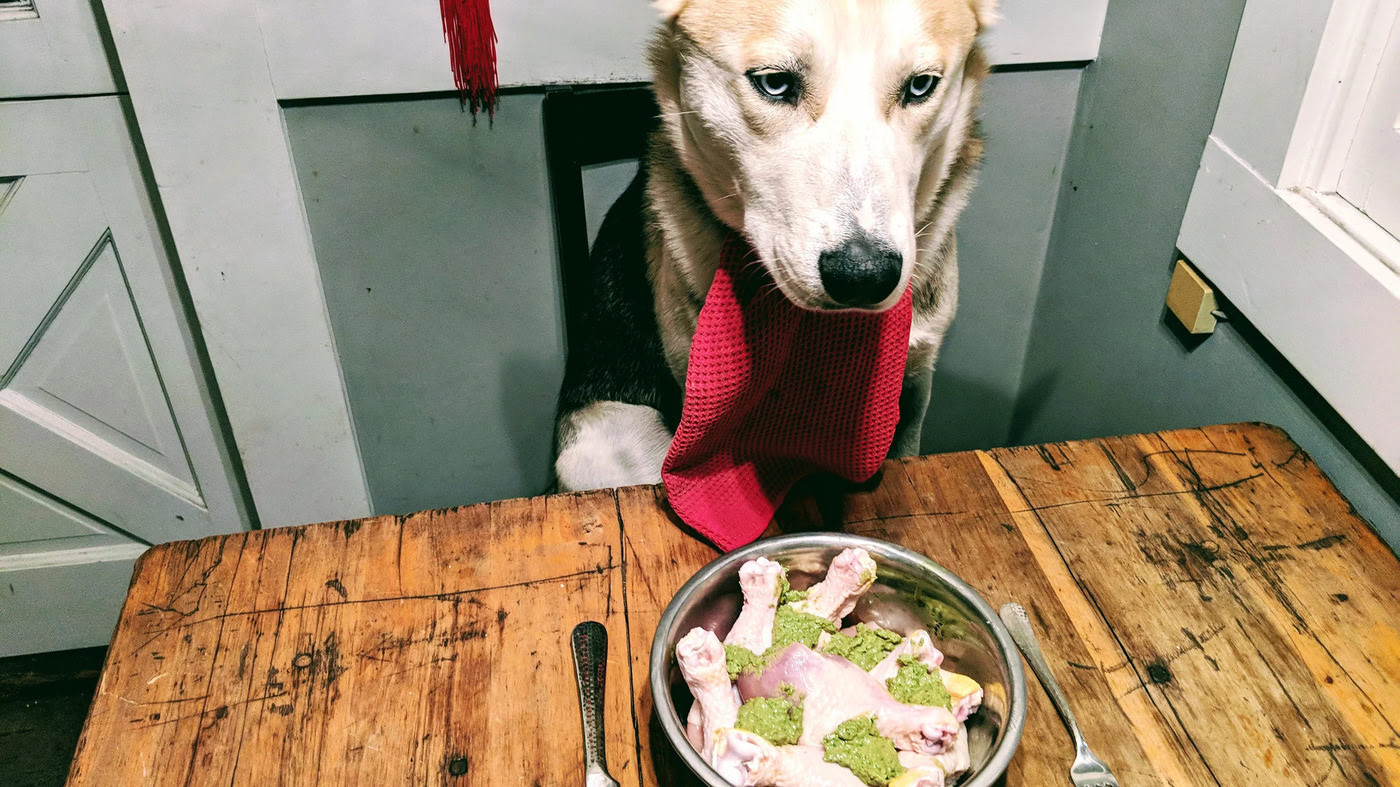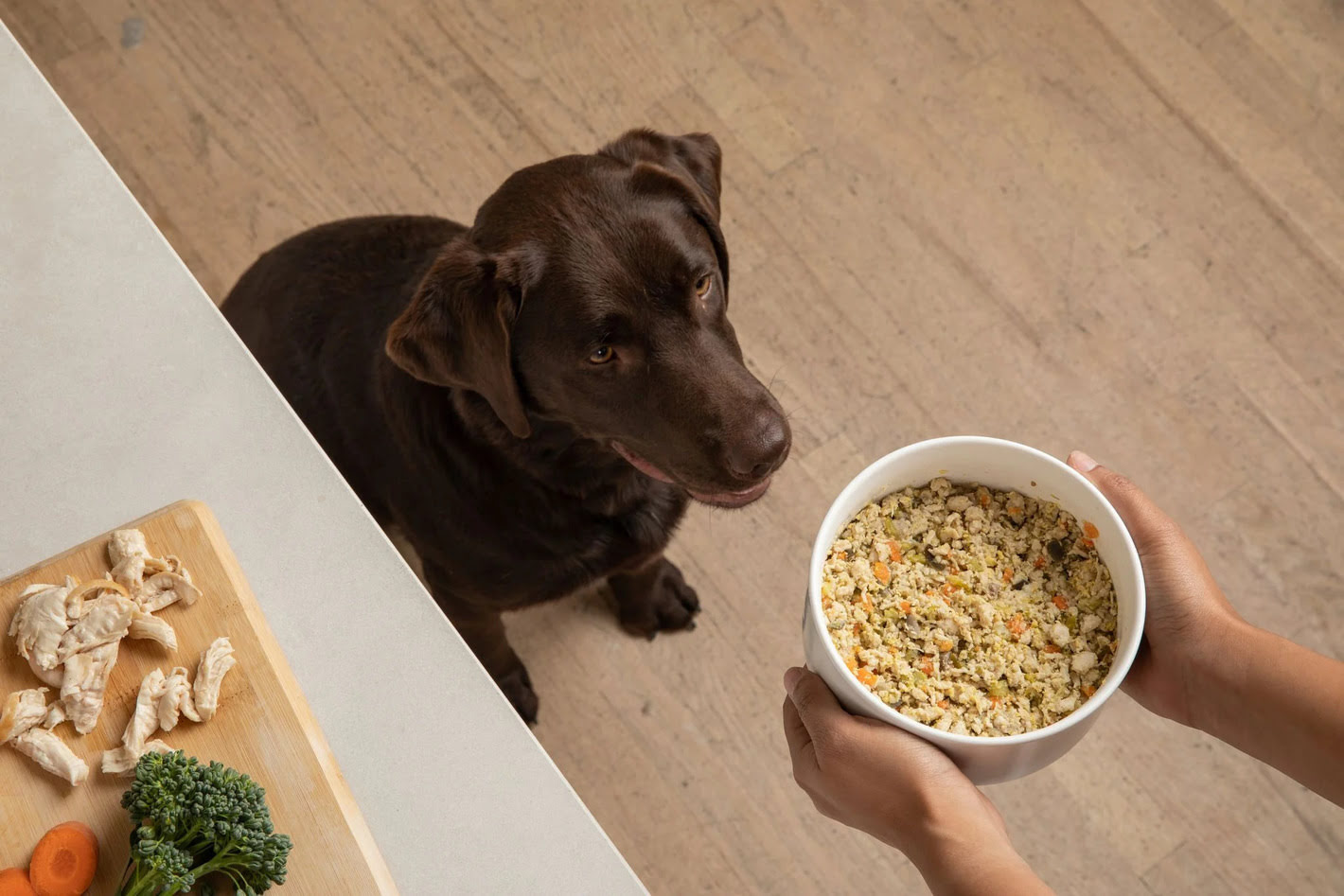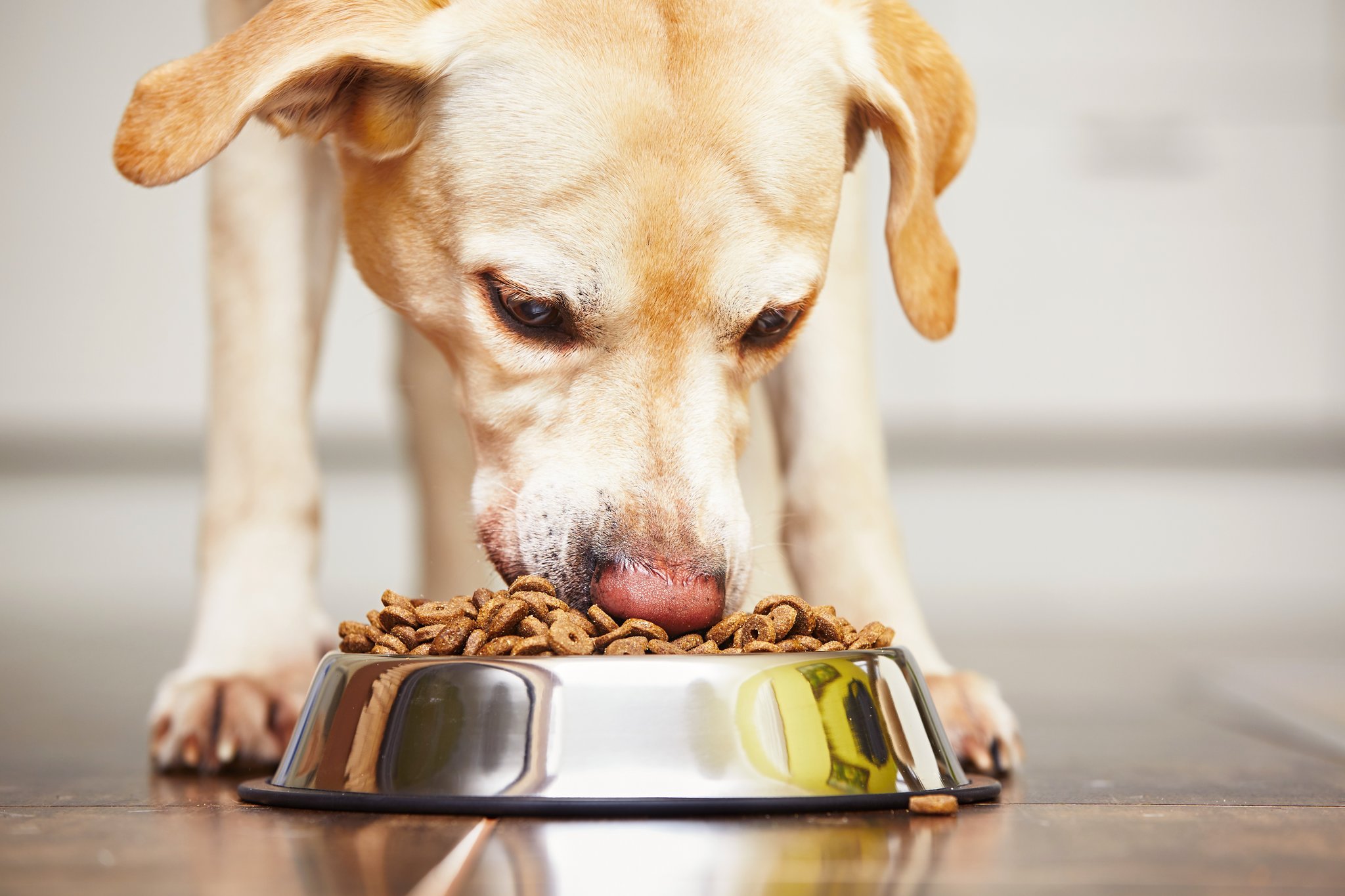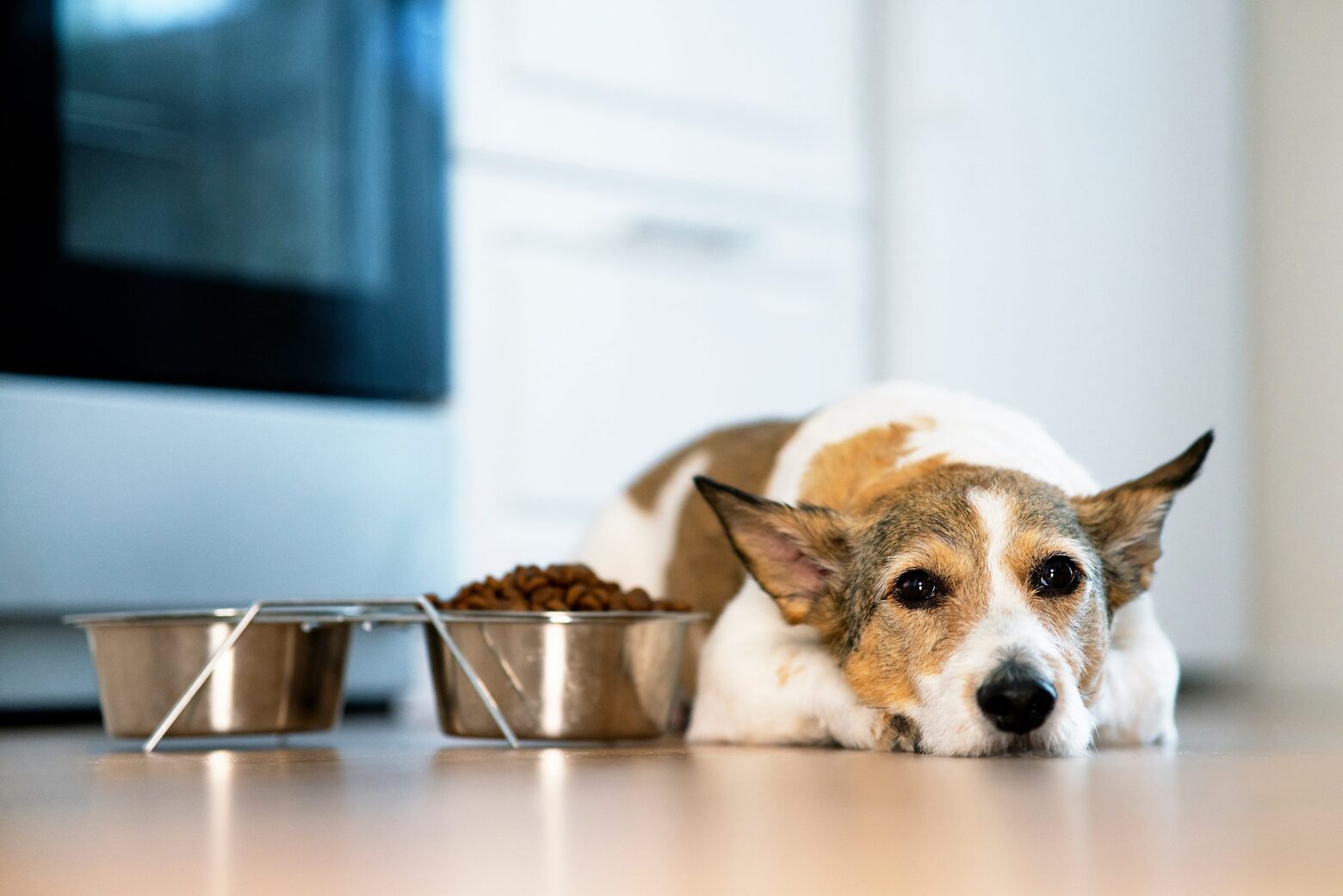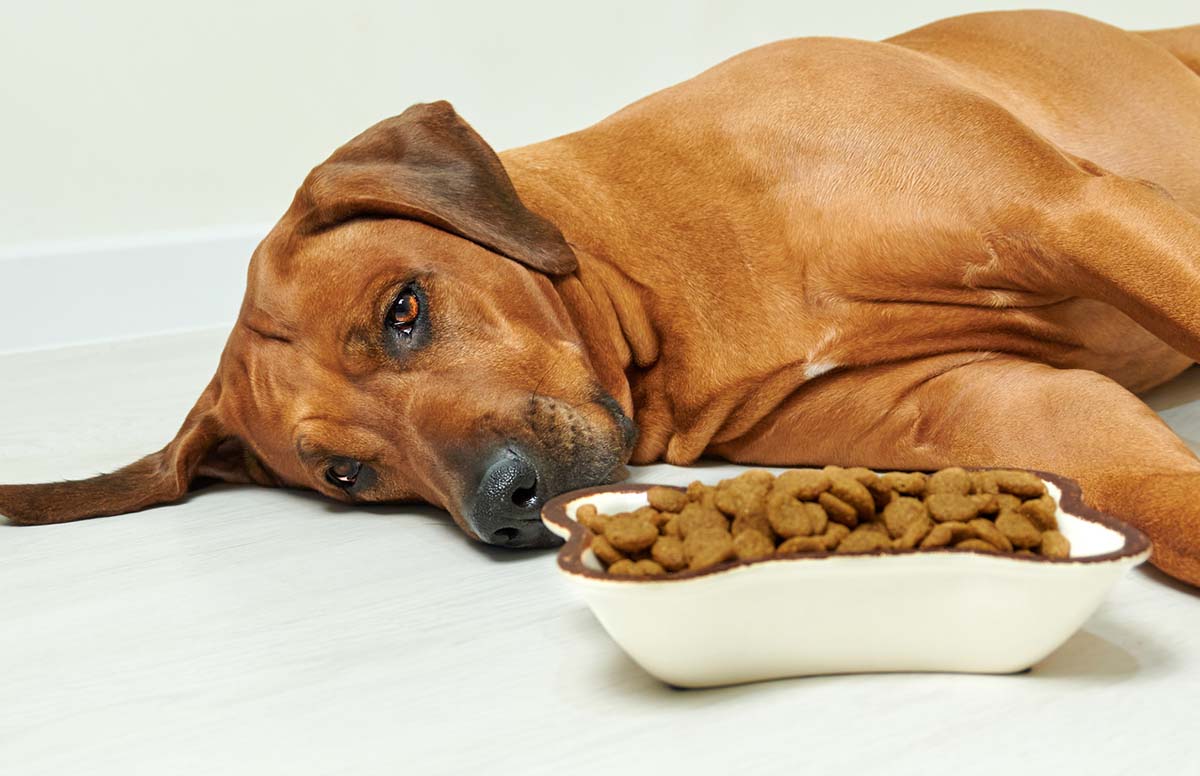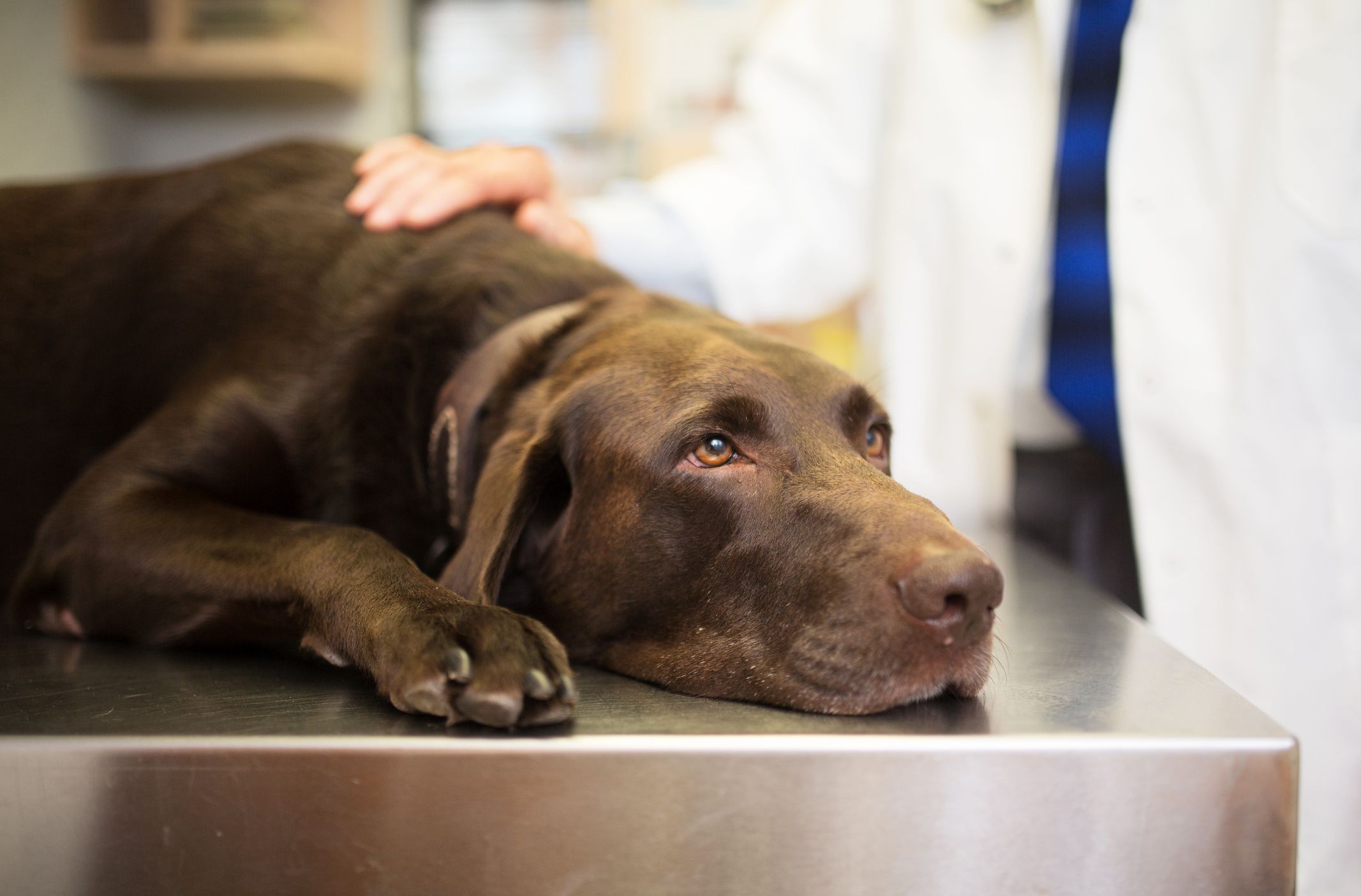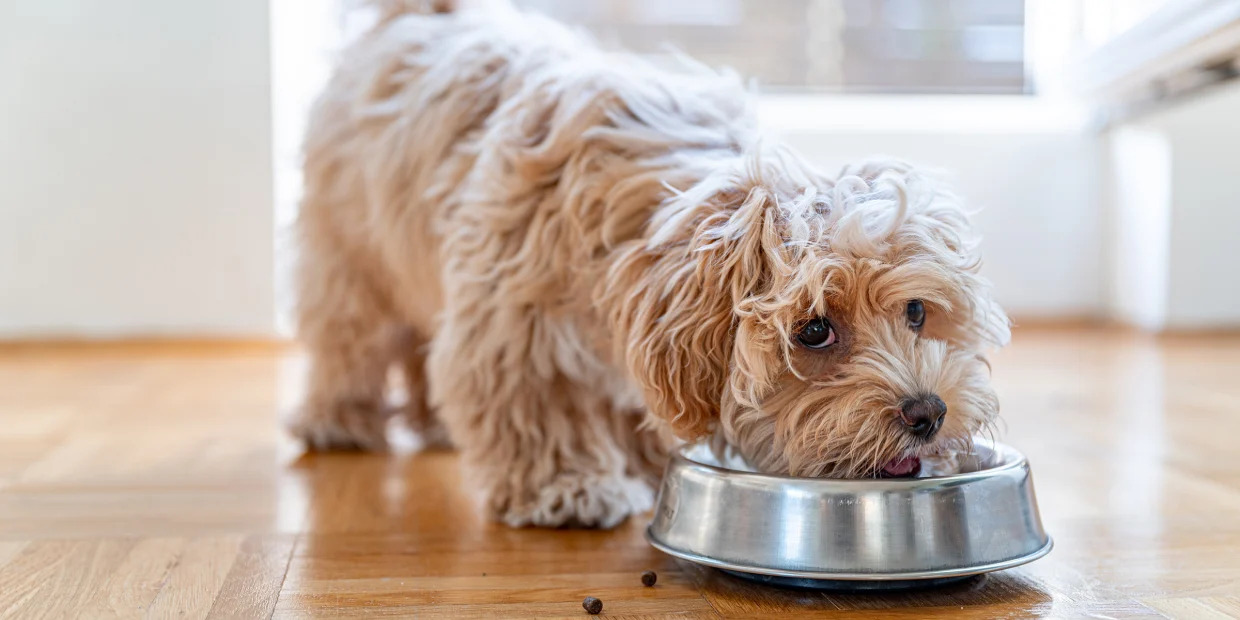Home>Health & Wellness>Nutrition & Diet>What Liquid Diet Is For Dogs
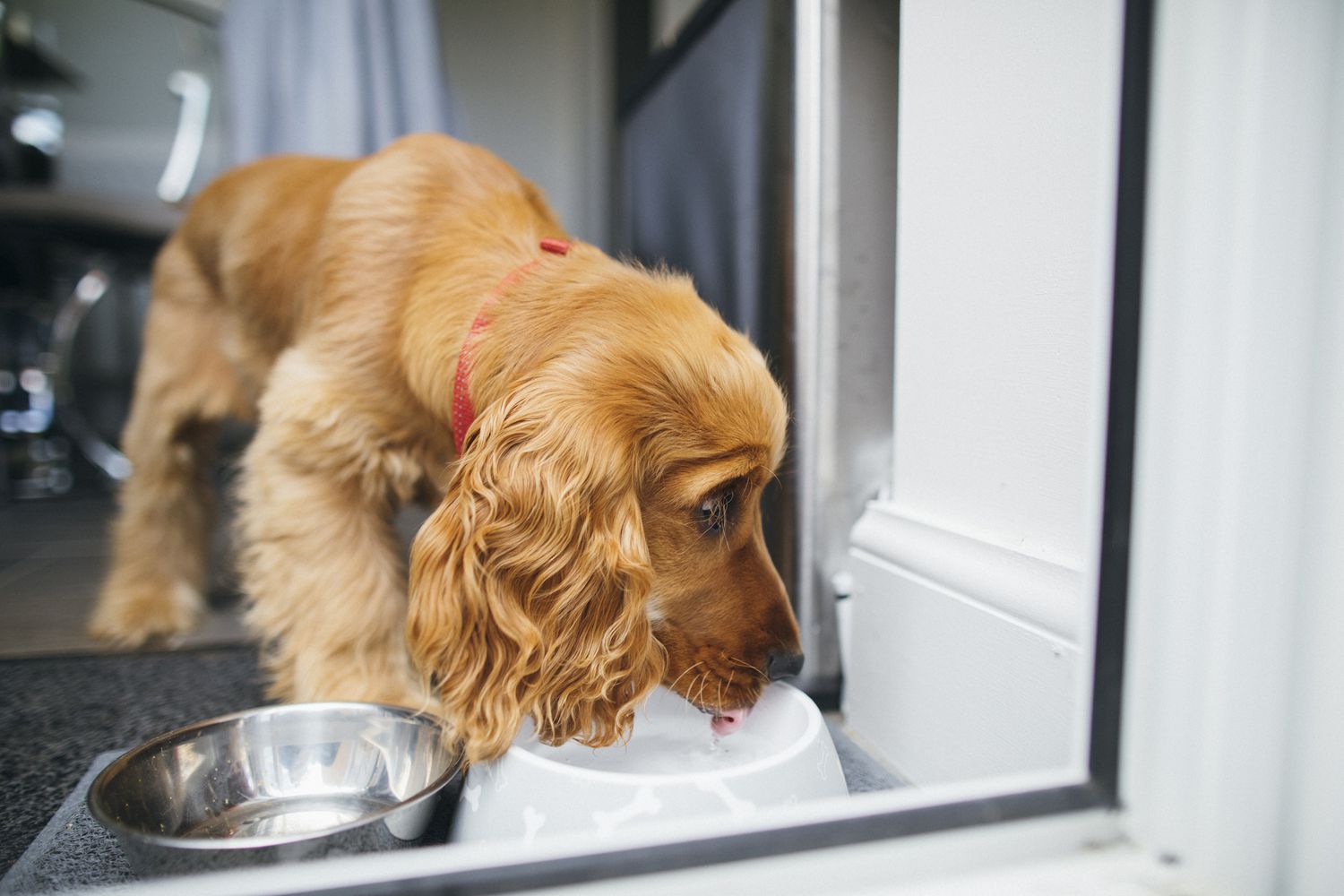

Nutrition & Diet
What Liquid Diet Is For Dogs
Published: January 28, 2024
Learn about the benefits and considerations of liquid diets for dogs. Discover how nutrition and diet play a crucial role in your pet's health.
(Many of the links in this article redirect to a specific reviewed product. Your purchase of these products through affiliate links helps to generate commission for Pawsomeoldies.com, at no extra cost. Learn more)
Table of Contents
Introduction
A liquid diet for dogs is a specialized feeding approach that involves providing nourishment in the form of liquids rather than solid food. This dietary regimen is often recommended for canines with specific health conditions or those recovering from surgery or illness. While dogs typically consume solid food, there are instances where a liquid diet becomes necessary to ensure their nutritional needs are met. Understanding the purpose, benefits, and considerations of a liquid diet for dogs is crucial for pet owners seeking to provide optimal care for their furry companions. In the following sections, we will delve into the intricacies of liquid diets for dogs, exploring the advantages, potential risks, and practical implementation of this feeding method. By gaining insight into this specialized dietary approach, pet owners can make informed decisions regarding their dog's nutritional requirements and overall well-being.
What is a Liquid Diet for Dogs?
A liquid diet for dogs involves providing nourishment in the form of liquids rather than solid food. This specialized feeding approach is designed to offer essential nutrients and hydration to dogs who may have difficulty consuming or digesting solid food. The liquid components of this diet can include water, broth, specially formulated liquid meals, and pureed foods.
There are various scenarios where a liquid diet for dogs may be recommended. For instance, dogs recovering from surgery or illness may have challenges with chewing or swallowing solid food, making a liquid diet a more viable option for meeting their nutritional needs. Additionally, senior dogs or those with dental issues may benefit from a liquid diet, as it can alleviate the strain of chewing while ensuring they receive essential nutrients.
Furthermore, dogs with certain medical conditions, such as gastrointestinal disorders or jaw injuries, may require a temporary switch to a liquid diet to facilitate easier digestion and minimize discomfort during feeding. In some cases, a liquid diet may be prescribed as part of a therapeutic regimen to manage specific health issues or aid in the recovery process.
It's important to note that a liquid diet for dogs should be carefully formulated to provide the necessary balance of nutrients, including proteins, fats, carbohydrates, vitamins, and minerals. Specialized liquid diets for dogs are often developed to meet these requirements, ensuring that the canine companions receive adequate nourishment despite the absence of solid food.
Overall, a liquid diet for dogs serves as a valuable alternative to traditional solid food consumption, catering to the unique needs of canines facing health challenges or requiring specific nutritional support. Understanding the purpose and potential benefits of a liquid diet for dogs is essential for pet owners and caregivers seeking to provide optimal care for their furry friends.
Benefits of a Liquid Diet for Dogs
A liquid diet for dogs offers a range of benefits that cater to the unique nutritional and health requirements of canines. Understanding these advantages is crucial for pet owners and caregivers seeking to provide optimal care for their furry companions.
-
Enhanced Digestibility: Liquid diets for dogs can be easier to digest, especially for canines with gastrointestinal issues or those recovering from surgery. The liquid form of nourishment reduces the strain on the digestive system, allowing for better absorption of essential nutrients and promoting overall digestive health.
-
Hydration Support: Liquid diets play a vital role in maintaining proper hydration levels in dogs, particularly for those who may have difficulty drinking sufficient water. By incorporating liquid components such as broth and water-rich formulations, a liquid diet helps ensure that dogs receive adequate hydration, which is essential for various bodily functions and overall well-being.
-
Nutritional Provision: Specially formulated liquid diets for dogs are designed to provide a well-balanced mix of essential nutrients, including proteins, fats, carbohydrates, vitamins, and minerals. This ensures that canines receive the necessary nourishment despite the absence of solid food, supporting their overall health and vitality.
-
Facilitates Feeding for Senior Dogs and Those with Dental Issues: Senior dogs and canines with dental problems may struggle with chewing and swallowing solid food. A liquid diet alleviates the challenges associated with consuming solid meals, offering a more manageable and comfortable feeding option while still meeting their nutritional needs.
-
Supports Recovery and Healing: For dogs recuperating from illness, surgery, or injury, a liquid diet can aid in the recovery process by providing easily digestible nourishment. This promotes healing and helps maintain the dog's strength and energy levels during the recovery period.
-
Versatility in Administration: Liquid diets for dogs offer versatility in administration, allowing for the incorporation of various nutrients and medications into the liquid formulations. This can be particularly beneficial for dogs requiring specific dietary supplements or medications as part of their treatment regimen.
Overall, the benefits of a liquid diet for dogs encompass improved digestibility, hydration support, comprehensive nutritional provision, facilitation of feeding for senior dogs and those with dental issues, support for recovery and healing, and versatility in administration. By recognizing these advantages, pet owners can make informed decisions regarding their dog's dietary needs, ensuring their furry companions receive the best possible care and support.
Risks and Considerations
While a liquid diet for dogs offers several benefits, it is essential for pet owners and caregivers to be mindful of potential risks and considerations associated with this specialized feeding approach. Understanding these factors is crucial for ensuring the well-being and health of canine companions.
Potential Nutritional Deficiencies
One of the primary considerations when implementing a liquid diet for dogs is the risk of potential nutritional deficiencies. While specialized liquid diets are formulated to provide essential nutrients, there is a possibility of certain vital components being insufficiently represented. This can occur if the liquid diet is not carefully balanced or if it is prolonged without proper monitoring. Essential nutrients such as proteins, fats, vitamins, and minerals must be adequately incorporated to prevent deficiencies that could impact the dog's overall health.
Dental Health Implications
Another consideration pertains to the potential impact on dental health. While a liquid diet may be beneficial for dogs with existing dental issues, prolonged reliance on liquid nourishment could lead to dental health concerns. Chewing and gnawing on solid food items contribute to dental hygiene by helping to remove plaque and tartar. Therefore, pet owners should be mindful of incorporating dental care practices, such as regular teeth cleaning and providing appropriate dental chews, to mitigate the potential impact on their dog's dental health.
Transitioning Challenges
Transitioning a dog to a liquid diet may present challenges, particularly if the canine companion is accustomed to consuming solid food. Dogs may initially resist the change in feeding routine, leading to reluctance or refusal to consume the liquid diet. Patience and gradual transition strategies are essential to facilitate the adjustment process and ensure that the dog receives adequate nourishment during the transition period.
Monitoring and Veterinary Guidance
Proper monitoring and veterinary guidance are crucial when implementing a liquid diet for dogs. Regular assessments of the dog's overall health, weight management, and nutritional status are essential to identify any potential issues or deficiencies early on. Additionally, consulting with a veterinarian to determine the suitability of a liquid diet for a specific dog, as well as receiving guidance on formulating a balanced liquid diet, is imperative to ensure the dog's nutritional needs are met effectively.
Consideration for Underlying Health Conditions
It is vital to consider any underlying health conditions or medical concerns that may impact the suitability of a liquid diet for a dog. Certain health issues may necessitate specific dietary considerations, and the implementation of a liquid diet should align with the dog's overall health status and any existing medical conditions. Consulting with a veterinarian to assess the dog's health and receive tailored dietary recommendations is essential in such cases.
By acknowledging these potential risks and considerations associated with a liquid diet for dogs, pet owners can make informed decisions and take proactive measures to mitigate any challenges. With careful attention to nutritional balance, dental health, transition strategies, monitoring, and veterinary guidance, the implementation of a liquid diet can be managed effectively to support the well-being of canine companions.
Read more: What Dog Diet Helps Stop Pancreatitis
How to Implement a Liquid Diet for Dogs
Implementing a liquid diet for dogs requires careful planning, consideration of the dog's specific needs, and adherence to essential guidelines to ensure the successful transition to and maintenance of this specialized feeding approach. The following steps and considerations are integral to effectively implementing a liquid diet for dogs:
1. Consultation with a Veterinarian
Before initiating a liquid diet for a dog, it is crucial to seek professional guidance from a veterinarian. A comprehensive veterinary consultation allows for the assessment of the dog's overall health, identification of any underlying medical conditions, and determination of the suitability of a liquid diet based on the dog's specific needs. The veterinarian can provide tailored recommendations, including the formulation of a balanced liquid diet that aligns with the dog's nutritional requirements and health status.
2. Formulation of a Balanced Liquid Diet
Based on the veterinarian's guidance, the formulation of a balanced liquid diet tailored to the dog's individual needs is essential. This may involve the use of specialized liquid meal replacements, pureed food, and nutrient-rich liquid supplements. The liquid diet should encompass a well-rounded mix of proteins, fats, carbohydrates, vitamins, and minerals to ensure comprehensive nutritional provision. Careful attention to the balance of essential nutrients is vital to prevent potential deficiencies and support the dog's overall health and well-being.
3. Gradual Transition and Acclimatization
Transitioning a dog to a liquid diet should be approached gradually to facilitate acclimatization and minimize resistance. This can be achieved by gradually introducing the liquid components alongside the dog's existing diet, gradually reducing the solid food portion while increasing the liquid diet over a period of time. Patience and consistency are key during the transition process, allowing the dog to adapt to the new feeding routine at a comfortable pace.
Read more: What Dog Food Is Best For Diet?
4. Monitoring and Adjustment
Once the dog has transitioned to the liquid diet, ongoing monitoring and adjustment are essential. Regular assessments of the dog's weight, overall health, and response to the liquid diet are crucial to ensure that the nutritional needs are being met effectively. Any signs of reluctance, digestive issues, or changes in the dog's well-being should be promptly addressed, and adjustments to the liquid diet may be necessary based on the dog's individual response and requirements.
5. Dental Care and Hygiene Considerations
Incorporating dental care practices is important when implementing a liquid diet for dogs. While the liquid diet may alleviate dental challenges, maintaining dental hygiene through regular teeth cleaning and providing appropriate dental chews is essential to support the dog's dental health. These practices help mitigate the potential impact of a liquid diet on dental hygiene and contribute to overall oral health.
By following these essential steps and considerations, pet owners can effectively implement a liquid diet for dogs, ensuring that their canine companions receive the necessary nourishment and support while maintaining their overall health and well-being. Regular communication with a veterinarian and attentive monitoring of the dog's response to the liquid diet are integral to the successful implementation and maintenance of this specialized feeding approach.
Conclusion
In conclusion, a liquid diet for dogs serves as a valuable and specialized feeding approach that addresses the unique nutritional and health needs of canines facing specific challenges or health conditions. By providing nourishment in the form of liquids, this dietary regimen offers a range of benefits, including enhanced digestibility, hydration support, comprehensive nutritional provision, and facilitation of feeding for senior dogs and those with dental issues. Additionally, a liquid diet can aid in the recovery and healing process for dogs recuperating from illness, surgery, or injury, while also offering versatility in the administration of essential nutrients and medications.
However, it is essential for pet owners and caregivers to be mindful of potential risks and considerations associated with a liquid diet for dogs. These include the risk of nutritional deficiencies, implications for dental health, transitioning challenges, the need for monitoring and veterinary guidance, and consideration for underlying health conditions. By acknowledging these factors and taking proactive measures to address them, pet owners can effectively manage the implementation of a liquid diet to support the well-being and health of their canine companions.
When implementing a liquid diet for dogs, careful planning, consultation with a veterinarian, formulation of a balanced liquid diet, gradual transition and acclimatization, monitoring and adjustment, and incorporation of dental care and hygiene considerations are integral to ensuring the successful transition to and maintenance of this specialized feeding approach. By following these essential steps and considerations, pet owners can provide optimal care for their furry friends, ensuring that their nutritional needs are met effectively while supporting their overall health and well-being.
In essence, the decision to implement a liquid diet for a dog should be guided by the dog's specific needs, health status, and professional veterinary recommendations. With the right approach, attention to detail, and ongoing monitoring, a liquid diet can serve as a beneficial and supportive feeding method for dogs requiring specialized nutritional support or facing specific health challenges. By prioritizing the well-being of their canine companions and staying informed about the intricacies of a liquid diet, pet owners can navigate this dietary approach with confidence and care, ultimately contributing to the health and vitality of their beloved dogs.
